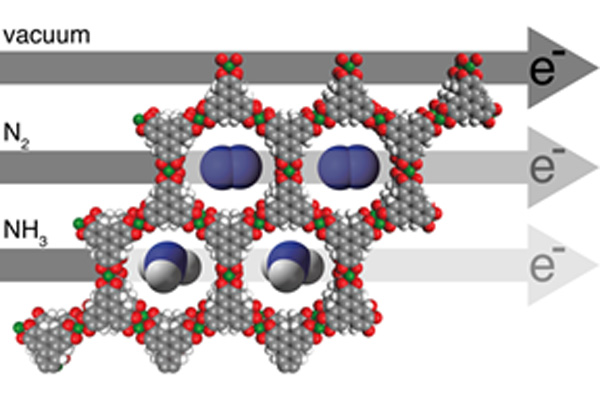
Víctor, Neyvis and Garins work has just been published in Angewandte Chemie Int. Ed. This joint effort shines some light into the underlying mechanism behind the chemiresistive phenomena displayed by electrically conductive MOFs. Taking advantage of our previously reported devices based on Cu-CAT-1 ultrathin films (~30 nm), we used experimental data in combination with computational modelling to obtain evidence for a guest dependent modification of the MOFs electronic structure. This causes a direct dependence between the electrical response of the MOF and guest interactions with its open metal nodes. You can see the full text here
